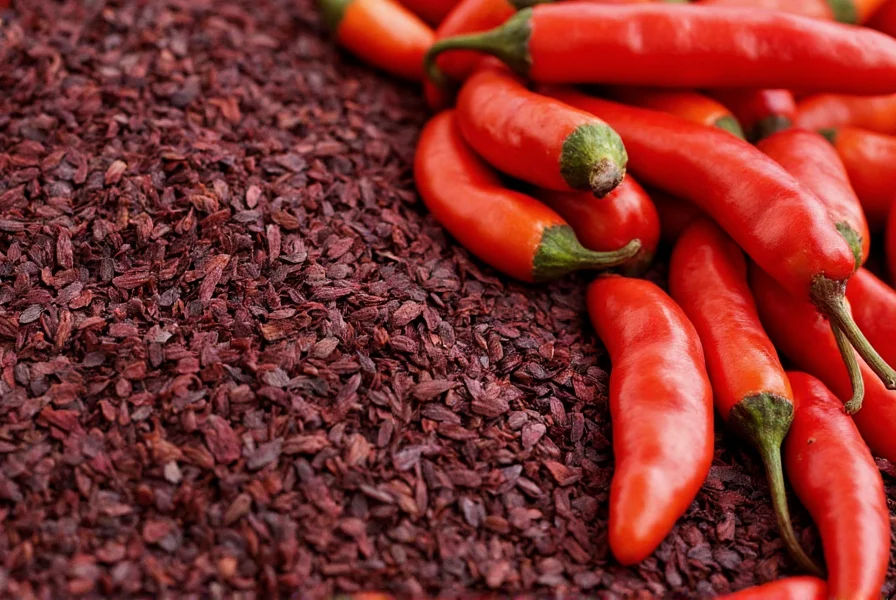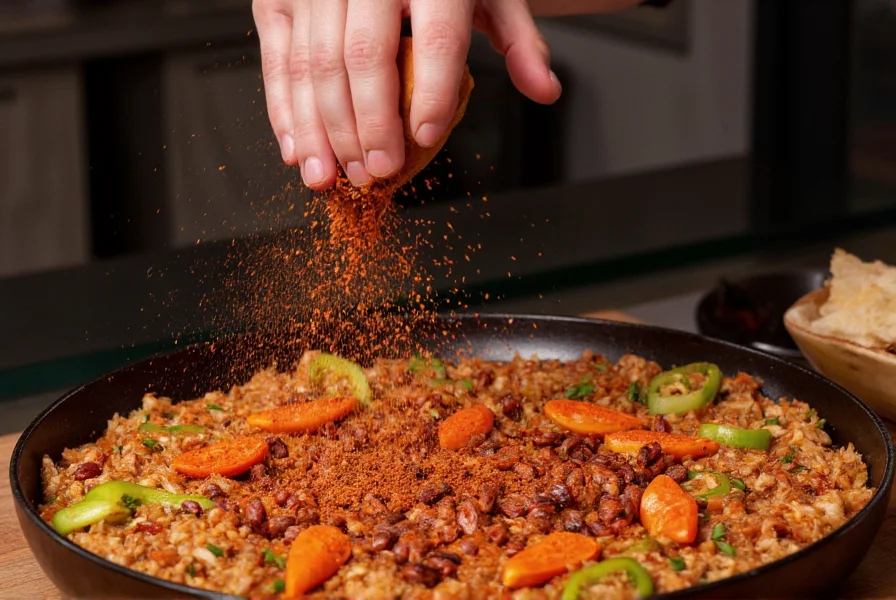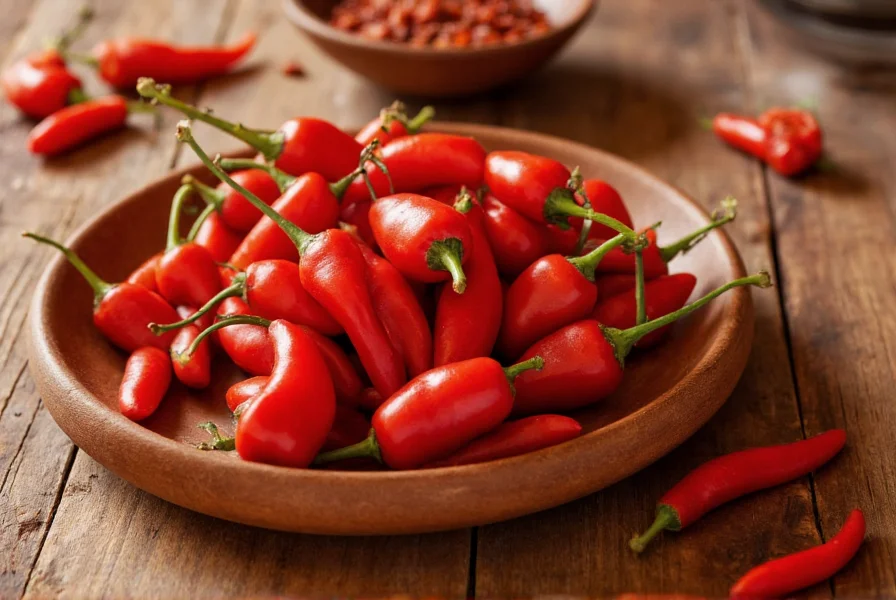Originating from the Şanlıurfa region in southeastern Turkey, urfa chili has become a prized ingredient among chefs and home cooks seeking to add sophisticated depth to their dishes. This specialty pepper transforms ordinary recipes with its nuanced flavor that balances heat with unexpected complexity.
What Exactly Is Urfa Chili?
Urfa biber ("biber" means pepper in Turkish) refers specifically to isot pepper made from the Turkish Demre pepper variety. The production process creates its signature characteristics:
- Grown in the fertile Harran Plain near Şanlıurfa
- Harvested when fully ripe and deep red
- Sun-dried during the day, then wrapped in sacks overnight
- This heating/cooling cycle creates the distinctive dark purple color
- Traditionally processed with a small amount of salt
- Crushed into flakes of varying coarseness

Flavor Profile and Heat Level
Understanding urfa chili's unique taste characteristics helps determine its best culinary applications. Unlike straightforwardly hot chilies, urfa offers a layered sensory experience:
| Characteristic | Description | Compared to Other Chilies |
|---|---|---|
| Heat Level | Moderate (9,000-35,000 SHU) | Milder than cayenne, hotter than paprika |
| Primary Flavor | Smoky, raisin-like fruitiness | More complex than standard red pepper flakes |
| Secondary Notes | Subtle tobacco, wine, and salt | Unique among dried chilies |
| Aftertaste | Warm, lingering finish | Less harsh than many hot spices |
The traditional production method creates urfa chili's signature flavor. After harvesting, peppers undergo a specific drying process: they're sun-dried during the day, then wrapped in sacks overnight. This heating and cooling cycle causes the peppers to sweat, concentrating flavors and developing the characteristic dark purple color. The slight salt content (about 3%) enhances preservation and contributes to the overall flavor profile.
How to Use Urfa Chili in Cooking
Urfa biber shines when used as a finishing spice rather than cooked for extended periods. Its delicate flavor compounds can dissipate with prolonged high heat. Consider these applications for best results:
- Finishing touch: Sprinkle over finished dishes like hummus, roasted vegetables, or grilled meats
- Dry rubs: Combine with other spices for meat or vegetable rubs
- Dips and spreads: Mix into yogurt sauces, feta cheese spreads, or eggplant dips
- Oil infusion: Steep in olive oil to create flavored oil for dressings
- Bread topping: Sprinkle over flatbreads or focaccia before baking
When substituting urfa chili in recipes, remember that 1 teaspoon of urfa biber generally equals 1 teaspoon of crushed red pepper, but with more complex flavor. Start with smaller amounts and adjust to taste, as its heat builds gradually.
Urfa Chili vs. Similar Spices
Many cooks confuse urfa biber with other dried chilies. Understanding these differences helps select the right spice for your recipe:
- Aleppo pepper: Often considered the closest substitute, but Aleppo has a brighter, citrusy note with less smokiness and slightly higher heat
- Smoked paprika: Provides smokiness but lacks urfa's fruitiness and heat
- Crushed red pepper: More straightforward heat with less complexity
- Chipotle powder: Smoky but with different flavor profile and higher heat
For authentic Turkish dishes like lahmacun (Turkish pizza) or çiğ köfte (spiced meatless balls), urfa chili provides an irreplaceable flavor dimension that substitutes can't fully replicate.

Storage Tips for Maximum Freshness
To preserve urfa chili's delicate flavor compounds, proper storage is essential:
- Store in an airtight container away from light and heat
- Keep in a cool, dark pantry (not above the stove)
- Refrigeration extends shelf life to 18-24 months
- Freezing preserves flavor for up to 3 years
- Check for faded color or diminished aroma as signs of degradation
Unlike many spices that lose potency quickly, properly stored urfa chili maintains its distinctive flavor profile longer due to the traditional processing method. However, for optimal flavor, use within one year of opening.
Where to Find Quality Urfa Chili
Authentic urfa biber can be found through several channels:
- Turkish or Middle Eastern grocery stores (often the most affordable option)
- Specialty spice retailers (both online and brick-and-mortar)
- High-end supermarkets with robust spice sections
- Reputable online spice merchants
When selecting urfa chili, look for these quality indicators:
- Deep, rich purple color (not brown or faded)
- Moisture content that's dry but not brittle
- Distinctive wine-like aroma
- Minimal stem or seed content
- Origin information specifying Şanlıurfa region
Creative Ways to Use Urfa Chili
Beyond traditional Turkish applications, urfa biber enhances diverse cuisines:
- Blend into compound butter for steak or fish
- Mix with honey for a sweet-spicy glaze
- Add to chocolate desserts for unexpected depth
- Season popcorn for a sophisticated snack
- Enhance Bloody Mary cocktails with complex heat
- Stir into tomato-based pasta sauces
Professional chefs often keep urfa chili on hand for its ability to elevate simple dishes with minimal effort. Its moderate heat level makes it accessible to those who typically avoid spicy foods while still providing interest for heat enthusiasts.
Frequently Asked Questions About Urfa Chili
Is urfa chili the same as Aleppo pepper?
No, while often used interchangeably, urfa chili and Aleppo pepper are distinct. Urfa biber comes from Turkey and has a darker purple color, smokier profile, and slightly lower heat (9,000-35,000 SHU) compared to Aleppo pepper's brighter, citrusy flavor and higher heat level (30,000-50,000 SHU). The production methods also differ significantly.
Can I substitute smoked paprika for urfa chili?
Smoked paprika provides smokiness but lacks urfa chili's fruitiness and moderate heat. For closest results, combine equal parts smoked paprika and sweet paprika with a pinch of cayenne pepper and a tiny bit of salt. However, this won't fully replicate urfa's unique wine-like complexity.
Why is urfa chili sometimes called isot pepper?
"Isot" refers to the traditional processing method where peppers are sun-dried during the day and wrapped in sacks overnight. This specific technique creates the distinctive dark purple color and complex flavor profile. In Turkey, "isot" has become synonymous with this particular style of chili production.
Does urfa chili contain actual salt?
Authentic urfa biber typically contains about 3% salt as part of the traditional processing method. This small amount helps with preservation and enhances the overall flavor profile. If you're concerned about sodium content, look for unsalted varieties, though these may have a slightly different flavor profile.
How long does urfa chili stay fresh?
When stored properly in an airtight container away from light and heat, urfa chili maintains peak flavor for 12-18 months. Refrigeration extends this to 18-24 months, while freezing preserves quality for up to 3 years. Signs of degradation include faded color, diminished aroma, and loss of the characteristic wine-like flavor notes.











 浙公网安备
33010002000092号
浙公网安备
33010002000092号 浙B2-20120091-4
浙B2-20120091-4